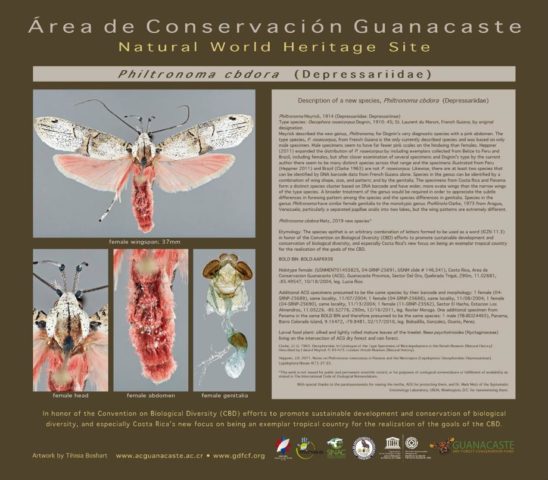Philtronoma Cbdora; this is the name of a new species of butterfly native to Guanacaste that was discovered by Costa Rican scientists and presented last week during the 1st meeting of the Bureau of the United Nations Environment Assembly (ANUMA) in Trondheim, Norway.

What characterizes it? As an adult, the moth shows its bright pink back wings when it flies, but when it lands on a leaf or tree bark, it immediately hides it with its front wings that are gray, so it looks like lichen or a piece of trash. When it is a green caterpillar, it apparently only feeds on the mature leaves of Neea psychotrioides, a native shrub of tropical forest with a wide neotropical distribution (in the Nyctaginaceae family of plants).
The name of this species is in honor of the Convention on Biological Diversity (CBD), an international treaty of 1993, in which the conservation of diversity, the sustainable use of biological diversity, and the benefits derived from it are sought of the use of genetic resources.
“The conservation of biological diversity is the common interest of all humanity. The Convention on Biological Diversity (CBD) covers biological diversity at all levels: ecosystems, species, and genetic resources. It also covers biotechnology, among other things, through the Cartagena Protocol on Biosafety”, said Carlos Manuel Rodríguez, Minister of Environment and Energy (MINAE).
Likewise, Cristiana Pasca Palmer, Executive Secretary of the Convention on Biological Diversity, rescued that this discovery is the result of the Costa Rica biodiversity inventory program, which aims to classify all species in the country.
“Costa Rica is a world leader in the conservation of nature and sustainable development, and we are so happy to have them as partners and champions of biodiversity. My sincere thanks to Costa Rica and the MINAE for their leadership and this incredible honor”, added Palmer.

